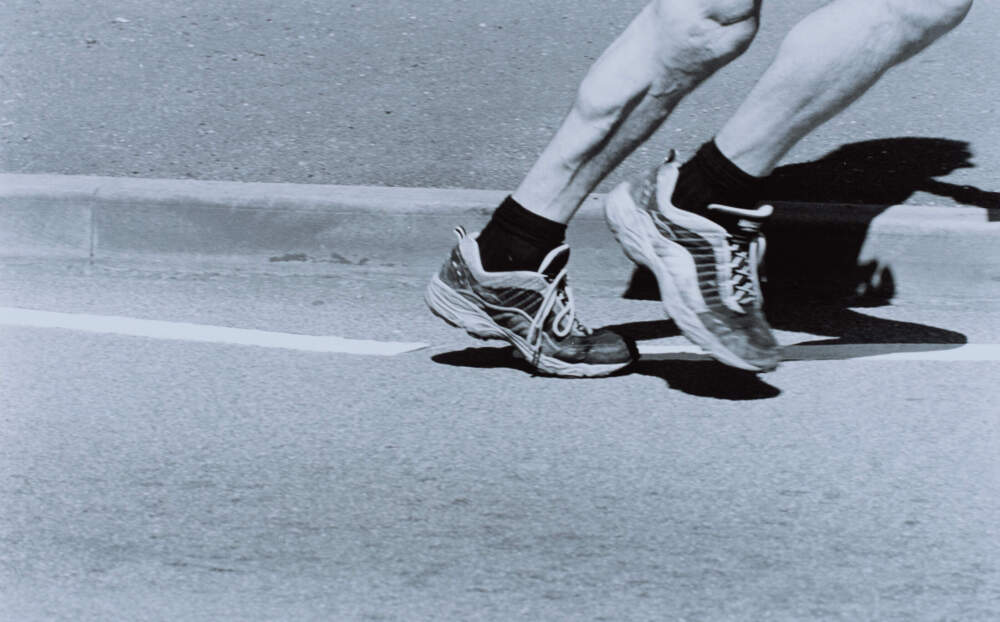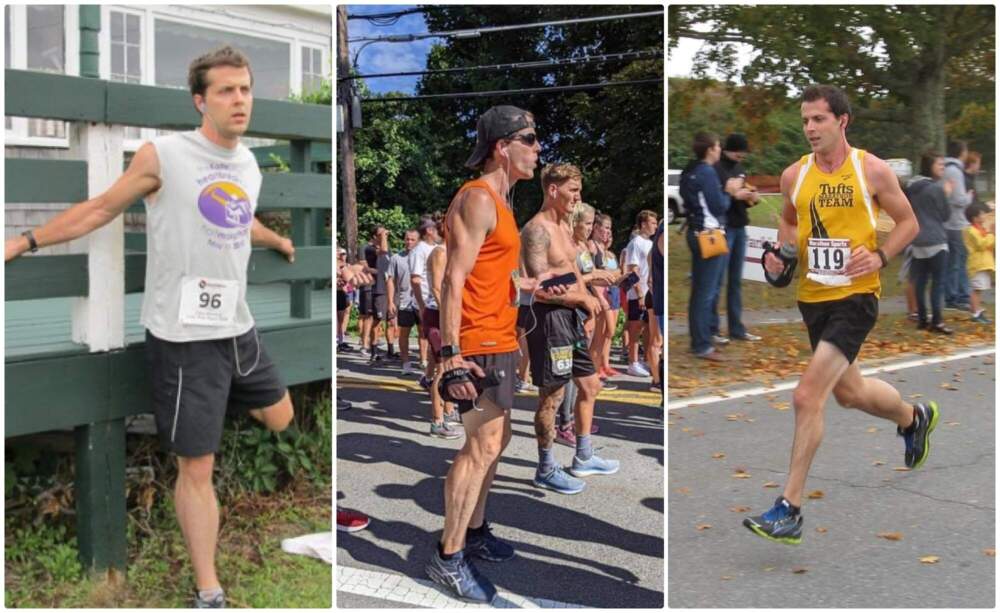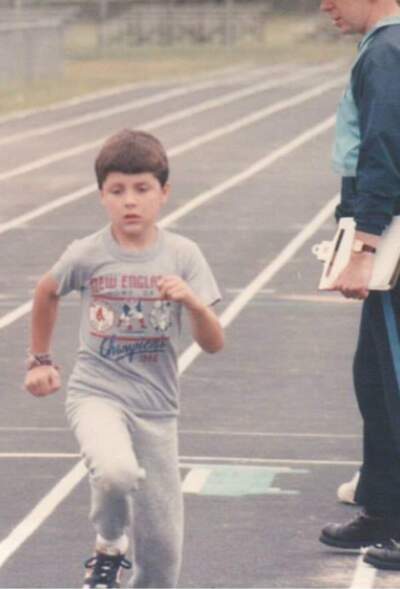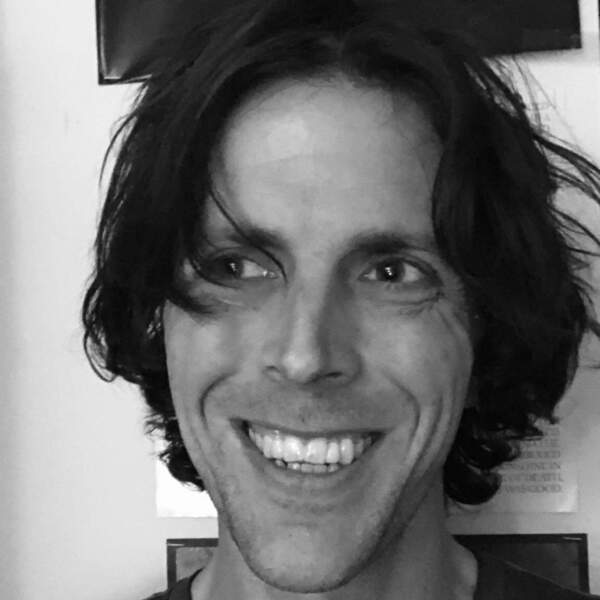Advertisement
Commentary
Running is everything to me. What if it’s time to say goodbye?

According to my meticulously kept records — first a calendar-like booklet that came with my first subscription to Runner’s World, then an Excel spreadsheet, then the inevitable running app — I ran 24,733 miles between June 2008 and January 2024.
That's just 168 miles short of the circumference of Earth at the equator.
During that 15-and-a-half-year stretch, I ran at least a few miles almost every day. Weeks would go by without a day off. My philosophy was that I should run every day, so the only days I missed were the ones when running was impossible because of a blizzard or because I had to annotate 100 pages of Dickens and catch up on grading papers. I never took a day off by choice.
The longest stretch I went without running was five days. In 15 years.
I ran some 5Ks and sometimes placed well enough to collect some medals and trophies. I ran hometown 5-milers, unsmiling and humorless alongside happy Cape Cod tourists in matching t-shirts with unfunny puns about running and drinking, who looked like they’d come straight to the starting line from a bar with Jimmy Buffet’s greatest hits on repeat. I ran half and full marathons alike. I got into Boston on a fundraising end-around (I was fast, but not Boston Qualifier fast) in 2013 — of all years — and finished in time to smell the stench of gunpowder and hear the collective panic from a sufficiently safe distance. My legs cramped so badly I could barely walk. Two days later, I shook it off with a 6-mile run.

Every season, rain or snow, 95 degrees and humid or 10 below, it didn’t matter. Running was how I got by. Running was how I understood myself. And there were more than a few times when the endorphin dam burst and flooded my brain, my legs and my lungs with the fabled runner’s high. Basic bodily functions suddenly felt vivid and amazing. Taking a breath deep into a run felt ecstatic and powerful. I associated throbbing hamstrings and borderline heatstroke with virtue and pleasure.
But it wasn’t as much about endorphins and health as it was about need. I needed to tromp through that trail, hopping over roots, juking around deep mud and jagged rocks. I needed to fly down that road, watching street signs and strollers — and sometimes waterfalls and lakes — drift by.
I needed to remind myself that if I made it to that lamppost before the third chorus of the song I was listening to ended, whatever thing I was worrying about that day might fade away.
It wasn’t healthy, except maybe in some basic cholesterol-lowering sort of way. And as often as not, it was one more noisy thing for my neurodivergent brain to check off the day’s to-do list, a matter of perverse morality, of pungent puritanism — the conviction that not to run was, quite simply, to fail and be fallen.
But as of this writing, I haven’t run for 67 days. In January, I was walking down the steps to the laundry room one evening and did that thing where you think you’re on the bottom step but you’re actually on the second-to-bottom step, so the step down is a little faster, longer and harder than you were expecting.
Running was how I got by. Running was how I understood myself.
The pain was searing and immediate. I took the next day off with little complaint. The day after that I went for a run, like usual, certain that all would be fine. I lasted 0.15 miles. I didn’t even make it to the bottom of my street.
It's hard to know what you’re supposed to do when the thing that has been your daily practice, the thing you always managed to make time for, the thing that brought you pleasure and pride and relief even when you didn’t really feel like doing it but your brain told you that you had to, is suddenly just gone.
So instead, I took power walks in the woods. At the YMCA, I used an elliptical machine with moderate resistance, or an exercise bike that blithely provides an alarming amount of data about my metabolism. It’s fine. The numbers go up and prove that I exercised. My heart rate increases. Cardio is accomplished.
About a month after the injury, I went to a walk-in orthopedic clinic and got an X-ray. The results were inconclusive, but they gave me an inflatable brace they said I could wear with a shoe (reader, you cannot wear a shoe with this inflatable brace). They referred me to a sports medicine doctor whose practice involves lots of poking and prodding.
When I saw him two weeks later, he gave me a better brace with a slimmer profile. And then I endured the high drama of an MRI, complete with ill-fitting gown and the loud knocking and sawing sounds.
A few days later, the official “impression” popped up in my patient portal: “Severe degenerative changes of the talonavicular joint with extensive full-thickness cartilage loss of the talar head, and marked underlying bone edema. Flattening/irregularity of the subchondral bone plate of the talar head, which may represent stigmata of subchondral fracture. Arthritic inflammation possibly exacerbated by pre-existing condition.”
I’m no orthopedist, but not one word of that sounds optimistic.

The pre-existing condition is a club foot. The foot I injured had been twisted more than 90 degrees when I was born. If it hadn’t been corrected, I wouldn’t have been a runner, much less a fanatical one. I’d have been using a crutch and walking with my weight on the left edge of my left foot, like what happens when you roll your ankle.
If I’d been born a little earlier, the newly developed procedure that corrected my club foot so effectively wouldn’t have existed yet. My foot still could have been treated, but I probably would have had a pronounced limp. I might or might not have been an athlete at all.
So maybe I wasn’t ever meant to run? Maybe every step from 2008 to 2024, was a gift — mileage logged on borrowed time. Maybe each sweaty hill repeat or Sunday morning long run or flat-out sprint to the finish line was a tantalizing glimpse of how freeing and blissful it is to move your own body in a particular way before the ravages of time or a carpeted laundry room staircase take it all away.
I start physical therapy soon. My doctor promised a steroid shot if I need it to handle the pain. Maybe by summer I’ll be right back at it, the past several weeks a mere blip in my running logs. Maybe.
But I feel like I’m preparing for something. Preparing to let it go. Preparing to stare my other pre-existing condition, obsessive-compulsive disorder, in the face and tell it that running isn’t in the toolbox anymore (not that that will stop my brain from fixating on something else). And preparing to say to running, “It’s been real. Thanks for all the endorphins.”
